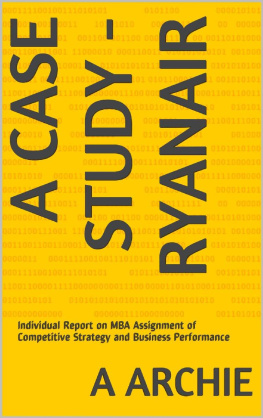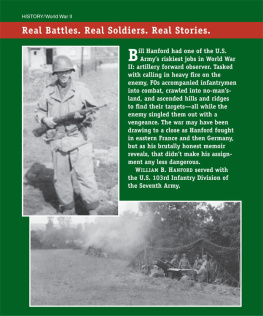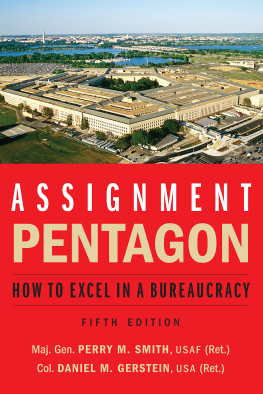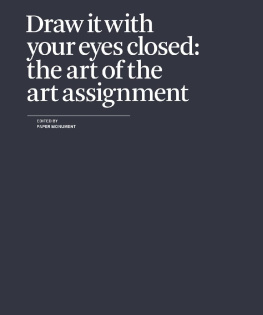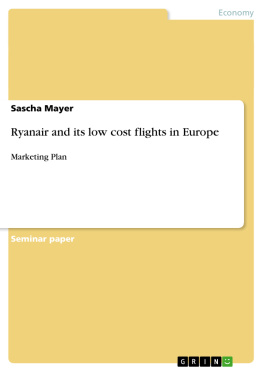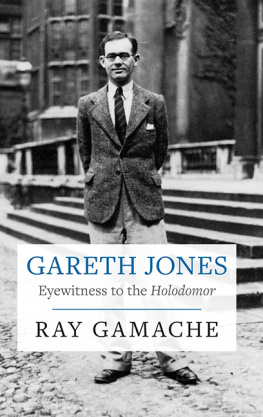The aim of this assignment is to analyse Ryanairs competitive strategy (in relation to long term profitability and its relative position in the industry) and its business performance. It begins with an introduction to the airline industry followed by the low-cost / no-frills market and a brief background to Ryanair. Strategic issues are focused, giving due considerations to its historical performance.
The methodology and approach come from the tutors handouts, textbooks, journals, newspapers and web sites. Porters five forces are used to analyse how attractive the future perspective of the industry and the value chain is used to understand Ryanairs relative position in the industry. Ryanairs financial analysis is made giving due consideration to cost drivers and the value chain while taking EasyJet and Virgin express as benchmarks. Scenario analysis, which is supported by soft and hard evidence, is used to test the options available to the business. Finally, based on the conclusions together with all analysis and scenario-testing, recommendations are made for future directions of Ryanair.
Introduction
Airline Industry Trends
As a mode of transport, air travel has grown into one of major industries of our times. The impact it has had on global business and the contribution it has made to business across boundaries are worthy of assessing since it affects the web of other industries and the airline industry itself.
In the years between 1987 and 1997, air transport within the European Union was deregulated. With this, subsidies that were previously given to national carriers were removed allowing fair and free competition between European carriers. This period saw an influx of low-cost / no-frills airlines coming into the market. However, of the 80 carriers that began operations after 1992, 60 had already gone bankrupt by 1996. At first, the low-cost carriers proved little threat to the major scheduled airlines. However, as they expanded the number of routes operated and consequently passenger numbers, the major scheduled airlines also joined the trend by launching their own low-cost carriers. British Airways, for example, launched GO and KLM UK launched Buzz.
Ryanair
Ryanair was founded by Michael OLeary in 1985 with two 18-seat Bandeierante aircrafts flying between Waterford and London, Gatwick. Today it has become the Europes largest and most successful low-cost airline. And it has moved up to being the tenth largest international scheduled airline in Europe in terms of passenger numbers.
Competitors
EasyJet
Based in London, Luton, EasyJet was formed on October 18 1995 with a copycat business model (The Economist, 2000). The airline quickly grew up and by September 2001, it owned 19 737-700s and now offers 40 routes to 16 key business and leisure destinations within Europe (easyjet.com). And the year 2002 announced massive aircraft acquisition plans. The efficiency driven-business model, creation of brand awareness and maintenance of high levels of customer satisfaction were regarded as critical success factors.
Virgin Express
In 1991, the City Hotels Group formed Euro Belgian airlines which was subsequently taken over by the Virgin Group and renamed Virgin Express in 1996. At that time, Virgin owned 90% of the company and its former shareholders owned the remaining 10%. In 1997, 49% of the shares were sold to the public. The airlines aim is to build the number one. Low-fare scheduled airline in Europe.
Methodology
Porters five forces model is used to analyse the industry and understand how attractive it from the perspective of long term profitability. In order to suit the analysis more towards published account dada, I tried to consider the following points;
Prices are influenced by the bargaining power of consumers and the threat of substitutes.
Costs are influenced by the bargaining power of supplies and the rivalry among competitors.
Investment is influenced by the threat of entrants and other factors including rivalry and consumer requirements.
Given the range of possible external forces, one might imagine that the range of possible strategies is rather large. But Porter takes the opposite position: only a few generic strategies survive in the long run.
Ryanairs value chain is used to analyse its relative position within the industry. A companys relative position influences its profitability. I will be looking at porters generic strategies to understand its sustainable competitive advantage giving due consideration to the cost drivers and the low-cost strategy.
Spreadsheet model and scenario testing is used to analyse the financial issues.
Mass information is collected through Mintel reports, the internet and other printed media. I assume that they are correct and impartial.
(All the monetary values are in Euros unless otherwise stated)
Analysis
The Industry
The UK economy has had a prolonged period of economic growth since the recession at the beginning of the 1990s. This has resulted in disposable income that has triggered increased demand for leisure activities including holidays. Between 1991 and 2000, personal disposable income (PDI) increased by 51%. Over the same period, the number of passengers uplifted by UK airlines rose by 87% as the demand for air travel continued to outpace growth in economic activity. The total number of passengers uplifted by UK airlines rose to 103.6 million passengers in 2000. Much of the growth in the UK airline industry during the 1990s was a result of the development of low cost airlines. The development of low-cost airlines in Europe was spearheaded in Ireland and the UK with Ryanairs strategic change from 1993, EasyJets launch in 1995 and GO in 1998.
Holiday making accounts for 67% of all air travel. Although the total number of holiday makers has remained static over the past decade, there has been a significant growth in the number of holidays taken by individuals. Other growth sectors which are important for passenger demand are the business travel and VFR (visiting friends and relatives) market. Business travel has increased by 47% between 1994 and 1999, and VFR travel by 73% between 1991 and 1999. This growth also accompanied its own constraints like capacity constraints and delay due to the lack of air traffic control capacity.
Porters Five forces Analysis of the Industry
Porters five forces model (1980) identifies five forces in an organizations environment that influence competition. With this model he tried to understand how attractive the profitability in different industries from the long-term perspective.
1) The threat of new entrants into the market is low. The industry is very competitive and growing. The barriers to the new entrants are high as a larger capital investment is required to start with and adapt a competitive strategy.
Capacity requirements are high due to higher aircraft costs and computer reservation systems (CRS)
Establishing bases and finding airports in strategic locations are difficult.
Competing on low-cost means thin margins. Therefore the higher the load factor the higher the profits earned. Initially it will be difficult for a new entrant as the market is dominated by Ryanair, EasyJet, Virgin Express, and British European and GO (See appendix under Mintel report/survey for passenger uplift figures).

